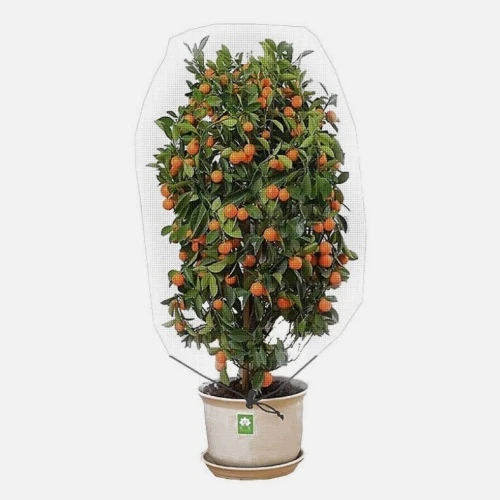-
 Afrikaans
Afrikaans -
 Albanian
Albanian -
 Amharic
Amharic -
 Arabic
Arabic -
 Armenian
Armenian -
 Azerbaijani
Azerbaijani -
 Basque
Basque -
 Belarusian
Belarusian -
 Bengali
Bengali -
 Bosnian
Bosnian -
 Bulgarian
Bulgarian -
 Catalan
Catalan -
 Cebuano
Cebuano -
 China
China -
 Corsican
Corsican -
 Croatian
Croatian -
 Czech
Czech -
 Danish
Danish -
 Dutch
Dutch -
 English
English -
 Esperanto
Esperanto -
 Estonian
Estonian -
 Finnish
Finnish -
 French
French -
 Frisian
Frisian -
 Galician
Galician -
 Georgian
Georgian -
 German
German -
 Greek
Greek -
 Gujarati
Gujarati -
 Haitian Creole
Haitian Creole -
 hausa
hausa -
 hawaiian
hawaiian -
 Hebrew
Hebrew -
 Hindi
Hindi -
 Miao
Miao -
 Hungarian
Hungarian -
 Icelandic
Icelandic -
 igbo
igbo -
 Indonesian
Indonesian -
 irish
irish -
 Italian
Italian -
 Japanese
Japanese -
 Javanese
Javanese -
 Kannada
Kannada -
 kazakh
kazakh -
 Khmer
Khmer -
 Rwandese
Rwandese -
 Korean
Korean -
 Kurdish
Kurdish -
 Kyrgyz
Kyrgyz -
 Lao
Lao -
 Latin
Latin -
 Latvian
Latvian -
 Lithuanian
Lithuanian -
 Luxembourgish
Luxembourgish -
 Macedonian
Macedonian -
 Malgashi
Malgashi -
 Malay
Malay -
 Malayalam
Malayalam -
 Maltese
Maltese -
 Maori
Maori -
 Marathi
Marathi -
 Mongolian
Mongolian -
 Myanmar
Myanmar -
 Nepali
Nepali -
 Norwegian
Norwegian -
 Norwegian
Norwegian -
 Occitan
Occitan -
 Pashto
Pashto -
 Persian
Persian -
 Polish
Polish -
 Portuguese
Portuguese -
 Punjabi
Punjabi -
 Romanian
Romanian -
 Russian
Russian -
 Samoan
Samoan -
 Scottish Gaelic
Scottish Gaelic -
 Serbian
Serbian -
 Sesotho
Sesotho -
 Shona
Shona -
 Sindhi
Sindhi -
 Sinhala
Sinhala -
 Slovak
Slovak -
 Slovenian
Slovenian -
 Somali
Somali -
 Spanish
Spanish -
 Sundanese
Sundanese -
 Swahili
Swahili -
 Swedish
Swedish -
 Tagalog
Tagalog -
 Tajik
Tajik -
 Tamil
Tamil -
 Tatar
Tatar -
 Telugu
Telugu -
 Thai
Thai -
 Turkish
Turkish -
 Turkmen
Turkmen -
 Ukrainian
Ukrainian -
 Urdu
Urdu -
 Uighur
Uighur -
 Uzbek
Uzbek -
 Vietnamese
Vietnamese -
 Welsh
Welsh -
 Bantu
Bantu -
 Yiddish
Yiddish -
 Yoruba
Yoruba -
 Zulu
Zulu
Durable Mesh Nets for Garden Protection and Plant Support Solutions
The Versatile Applications of Garden Mesh Netting
Garden mesh netting is a remarkable tool that has transformed the way gardeners protect their plants and enhance their growing environments. Whether used for shielding delicate seedlings from pests, supporting climbing plants, or providing structural integrity to garden beds, this versatile material has found its place in gardens around the world.
What is Garden Mesh Netting?
Garden mesh netting is typically made from polyethylene or similar materials and is designed with small holes that allow air, light, and moisture to penetrate while providing a barrier to pests and other external threats. The mesh can come in various sizes, colors, and strengths, making it suitable for a myriad of gardening applications.
Protecting Plants from Pests
One of the primary uses of garden mesh netting is pest control. Many gardeners face challenges with insects such as aphids, caterpillars, and beetles that can decimate crops overnight. By covering plants with mesh netting, you create a physical barrier that prevents these pests from reaching the foliage. This is particularly useful for vegetable gardens, where the stakes are high, and the loss of a single harvest can be significant. Mesh netting is also a safer alternative to chemical pesticides, providing an eco-friendly solution for plant protection.
Supporting Climbing Plants
In addition to pest control, garden mesh netting is an excellent support system for climbing plants, such as beans, peas, and tomatoes. As these plants grow, they need something to latch onto to reach their full potential. Installing mesh netting vertically in your garden can create a trellis-like structure that allows for better sunlight exposure and air circulation. This not only leads to healthier plants but also maximizes space in your garden, enabling you to grow more crops in a limited area.
garden mesh net

Creating Microclimates
Garden mesh netting can also be used to create microclimates, which are localized atmospheric zones where the climate differs from the surrounding area. For example, lightweight mesh can provide some protection from harsh wind and frost, allowing tender plants to thrive in less-than-ideal weather. By draping mesh netting over garden beds, gardeners can maintain a slightly warmer environment for their plants during cooler months, extending the growing season and enhancing productivity.
Soil Protection and Weed Suppression
Another important application of garden mesh netting is soil protection. By laying mesh netting over bare soil, you can help prevent soil erosion caused by wind and rain. Furthermore, certain types of mesh netting can act as a barrier to weeds, reducing the competition for nutrients and space that your plants need to flourish. This means less time spent weeding and more time enjoying the fruits of your labor.
Gardening Aesthetics
Beyond functionality, garden mesh netting can also be aesthetically pleasing. Available in various colors and designs, it can complement the overall look of your garden while serving practical purposes. Some gardeners use decorative mesh to create attractive partitions or hanging decorations, enhancing the overall visual appeal of their outdoor space.
Conclusion
In conclusion, garden mesh netting is an invaluable asset for any gardener. Its multifunctional applications make it an essential tool for pest control, plant support, climate regulation, soil protection, and even as an aesthetic element in garden design. By incorporating garden mesh netting into your gardening practices, you can create a healthier, more productive garden environment. Whether you are a seasoned gardener or a beginner, understanding and utilizing the benefits of garden mesh netting can lead to bountiful harvests and a thriving garden. As we embrace more sustainable practices, tools like garden mesh netting will play a crucial role in fostering greener spaces and healthier ecosystems.
-
Shipping Plastic Bags for Every NeedNewsJul.24,2025
-
Safety Netting: Your Shield in ConstructionNewsJul.24,2025
-
Plastic Mesh Netting for Everyday UseNewsJul.24,2025
-
Nylon Netting for Every UseNewsJul.24,2025
-
Mesh Breeder Box for Fish TanksNewsJul.24,2025
-
Expanded Steel Mesh Offers Durable VersatilityNewsJul.24,2025











